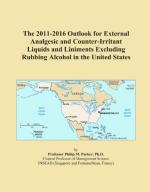|
This section contains 178 words (approx. 1 page at 300 words per page) |
Rubbing alcohol is known as isopropyl alcohol (C 3H 8O); it is one of the more useful of the commercial alcohols, included in hand lotions and many cosmetic items as well as in antifreeze or deicer products. A 70 percent solution has more germicidal properties than does ETHANOL (drinking alcohol), so it is used in many health-care situations, both in households and in medical facilities. It is also used for massages and by athletic trainers to treat skin and muscle groups, hence the term rubbing. It has a drying effect on the skin and causes blood vessels to dilate; its distinctive odor is associated with doctor's offices, since it is used to clean the skin being prepared for an injection.
When rubbing alcohol is ingested either pure or added to beverages, the result is toxic—with symptoms lasting longer than those seen after drinking ethanol (alcoholic beverages), because isopropyl alcohol is slowly metabolized to acetone, another toxic substance.
See Also
Bibliography
CSAKY, T. Z., & BARNES, B. A. (1984). Cutting's handbook of pharmacology, 7th ed. Norwalk, CT: Appleton-Century-Crofts.
|
This section contains 178 words (approx. 1 page at 300 words per page) |


